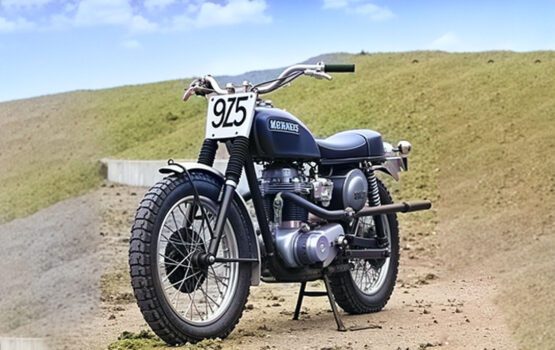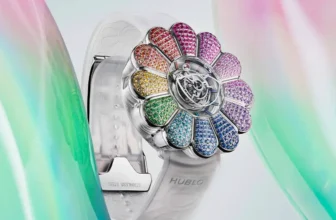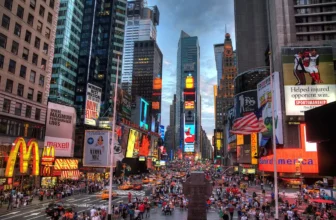The Story of Steve McQueen’s Motorcycles
Steve McQueen was more than just the “King of Cool.” He was the embodiment of speed, rebellion, and a certain brand of masculinity that defined Hollywood’s golden era. His name echoes not only through the history of cinema but also through the winding trails and dusty race tracks of motorcycle lore. While most know McQueen as the charismatic star of Bullitt, The Great Escape, and Le Mans, true aficionados know him for another love: motorcycles.
This is the story of Steve McQueen’s motorcycles , the machines he rode, loved, and in some cases, left behind. It’s also the story of the rusted relics rediscovered decades later, evoking nostalgia and reverence among collectors and fans. Let’s dive into the chrome-coated, oil-slicked history of Steve McQueen and the bikes that helped define his legend.
Born to Ride: McQueen’s Motorcycle Obsession
Long before he was a Hollywood icon, Steve McQueen was a thrill-seeker. Born in 1930 and raised in tough circumstances, he found solace in machines. As a teenager, McQueen tinkered with engines and eventually developed a love for motorcycles that never left him. When he rose to fame in the 1960s and ’70s, motorcycles weren’t just a hobby , they were a passion, a lifestyle, and often a symbol of who he truly was outside the limelight.
McQueen wasn’t the type to merely pose with a motorcycle for a photo op. He was a rider in the truest sense , a racer, a collector, a mechanic, and a student of the sport. He built a private collection of hundreds of motorcycles, often favoring British and American models. Triumph, BSA, Indian, Norton , he had them all. His garage was a museum in motion.
What Was Steve McQueen’s Motorcycle?
Perhaps the most iconic motorcycle associated with McQueen was the 1961 Triumph TR6 Trophy , the bike that appeared in The Great Escape (1963). Though the film was set during World War II and should’ve featured a period-correct German motorcycle, McQueen, ever the gearhead, insisted on riding the bike he felt most comfortable with. The TR6, disguised as a German BMW with a modified appearance, became the centerpiece of one of the most thrilling escape scenes in cinematic history.
The bike used in that legendary scene, where McQueen attempts to leap a barbed-wire fence into Switzerland, has become part of motorcycle mythology. While many believed McQueen did the jump himself, the truth is more nuanced (we’ll get to that shortly). Regardless, the Triumph TR6 became a symbol of McQueen’s cool, rebellious spirit , a machine that defined an era.
Other bikes in his personal collection included:
Husqvarna 400 Cross – A Swedish dirt bike McQueen used in off-road races, featured on the famous cover of Sports Illustrated in 1971.
Harley-Davidson VLs – He had a taste for pre-war American iron and owned multiple Harleys from the 1930s.
Indian Scouts and Chiefs – Classic American machines that represented vintage motorcycling at its finest.
BSA Gold Stars – A British racing bike that appealed to McQueen’s need for speed.
But of all these, one model stood out above the rest in McQueen’s heart.
What Was Steve McQueen’s Favorite Bike?
Although he owned a vast and varied collection, Steve McQueen’s favorite motorcycle was reportedly the Husqvarna 400 Cross. This was no ordinary motocross bike. Lightweight, nimble, and built for competition, the Husky was his weapon of choice for off-road racing during the early 1970s.
McQueen loved the rough-and-tumble world of desert racing. He entered the Baja 1000, Mint 400, and Elsinore Grand Prix , grueling off-road endurance races that tested even the best riders. The Husqvarna 400 Cross was the bike that gave him the edge in these wild competitions.
In 1971, McQueen was photographed mid-wheelie on the Husqvarna for the cover of Sports Illustrated, cementing the bike’s place in history. That image remains one of the most iconic motorcycle portraits ever taken. It wasn’t just a pose. McQueen had the skill and grit to ride it like a pro.
His love for the Husqvarna extended beyond racing. He enjoyed tearing through the desert with his good friend and riding partner Bud Ekins, who shared his passion for two wheels.
Did Steve McQueen Do His Own Riding?
The answer is a resounding yes , and it’s a huge part of what makes his legacy so enduring among motorcycle fans.
Steve McQueen did most of his own riding in films and often pushed directors to let him perform dangerous stunts. He had exceptional skill on both motorcycles and cars, having trained professionally in various disciplines. However, despite his talent, insurance policies often prevented him from doing his own stunts.
In The Great Escape, the iconic fence jump , the scene everyone remembers , was actually performed by Bud Ekins, McQueen’s stunt double and close friend. Although McQueen pleaded to do the jump himself, the film’s producers wouldn’t allow it due to the risk. That said, McQueen did perform many of the other scenes in the movie and even rode in the German soldier chase scenes , doubling as one of the soldiers himself, wearing a helmet to disguise his face.
When not on set, McQueen regularly competed in professional-level races under the pseudonym Harvey Mushman to avoid drawing attention and disrupting the competitive spirit of the events. He wasn’t just a celebrity rider , he was respected among real racers.
What Happened to Steve McQueen’s Motorcycle Collection?
Steve McQueen passed away in 1980 at the age of 50 due to cancer. At the time of his death, he owned over 200 motorcycles, many of which were stored in his Santa Paula airport hangar in California. This hangar was more than just a garage; it was his sanctuary , a place where he could escape Hollywood and get greasy with his favorite machines.
After his death, his collection was eventually auctioned off in parts. Some of the most iconic bikes, like the 1937 Crocker V-Twin and various vintage Indians, fetched astronomical prices. Collectors around the world clamored for a piece of McQueen’s motorcycling legacy.
Among those bikes was the Husqvarna 400 Cross, which sold for over $144,000 at auction. Other motorcycles from his collection have gone for similarly high prices, each carrying not just mechanical value but the aura of McQueen’s mystique.
But some of McQueen’s bikes didn’t make it to auction in pristine condition.
The Story of the Rusted Steve McQueen Motorcycle
In one of the more poignant chapters of McQueen’s motorcycle saga, a rusted-out, long-forgotten bike once owned by the actor was discovered years after his death. This bike, a Harley-Davidson VL, was found rotting in a barn in Missouri. It was pitted with rust, partially disassembled, and barely resembled the proud machine it once was.
But here’s the twist , despite its decayed condition, it was authenticated as a McQueen original. The provenance was confirmed through old documentation, serial numbers, and photographs. The rust, rather than diminishing its value, enhanced its appeal. It became a metaphor for McQueen himself: rough, unpolished, enduring.
The bike was restored carefully, with respect to its original configuration, and later sold at auction. It didn’t command the price of some of his more famous motorcycles, but it spoke volumes about McQueen’s legacy , one that lives on even in rust and ruin.
The Enduring Legacy
Steve McQueen’s motorcycles were more than machines; they were extensions of his soul. To ride was to live, and McQueen lived fully , on screen and off, with a throttle in his hand and the open road ahead.
Today, his motorcycles are cherished by collectors, admired in museums, and etched into the collective memory of motorcycling history. Whether it’s the gleaming Husqvarna 400 Cross that graced magazine covers or the rusted Harley rediscovered in a barn, each tells a story not just of a man, but of a mindset , one that celebrates freedom, risk, and the pure, visceral joy of riding.
Steve McQueen wasn’t just an actor who liked motorcycles. He was a motorcyclist who happened to be a movie star. His bikes weren’t props , they were tools of adventure, speed, and self-expression.
From the Triumph TR6 Trophy that helped him jump into cinematic immortality, to the rugged Husqvarna that captured the raw essence of desert racing, McQueen’s motorcycles remain cultural icons. His ability to connect with machines, to master them and let them become a part of his character, is what continues to draw new generations into his story.
And somewhere, in the heart of every rider who’s ever twisted a throttle, hit the dirt, or leaned into a curve with wind in their face, there’s a little bit of Steve McQueen.




